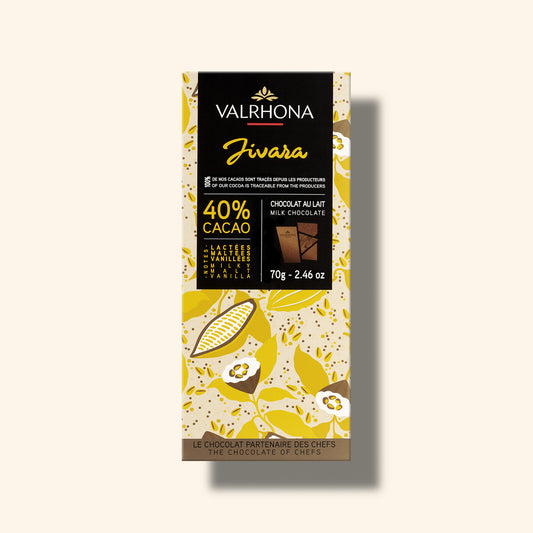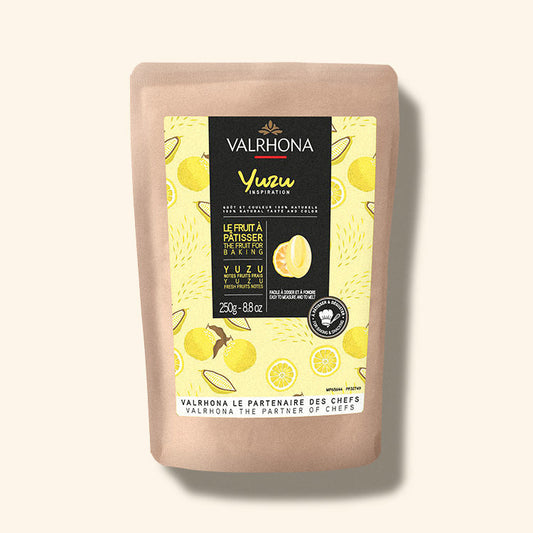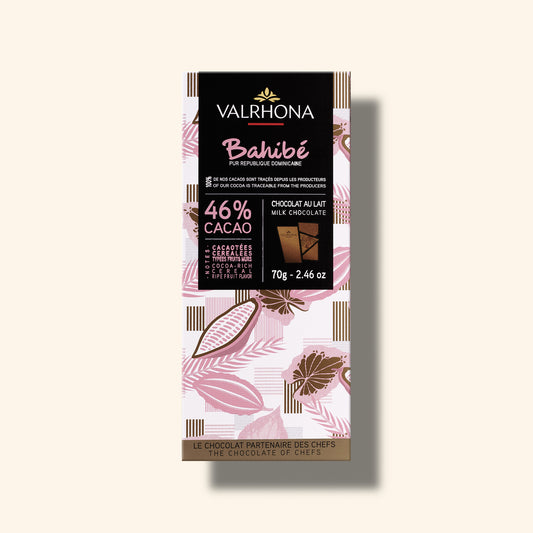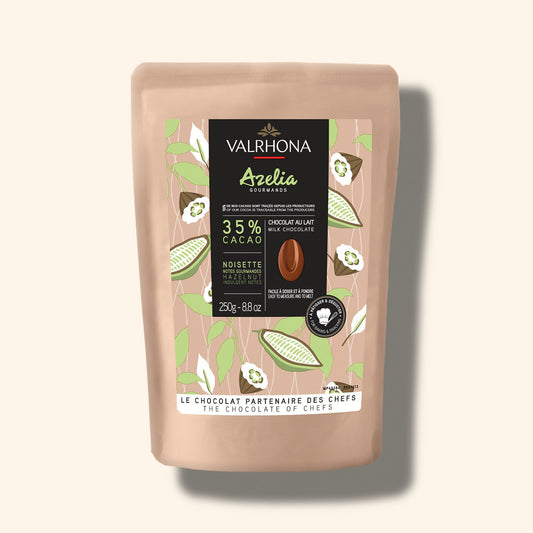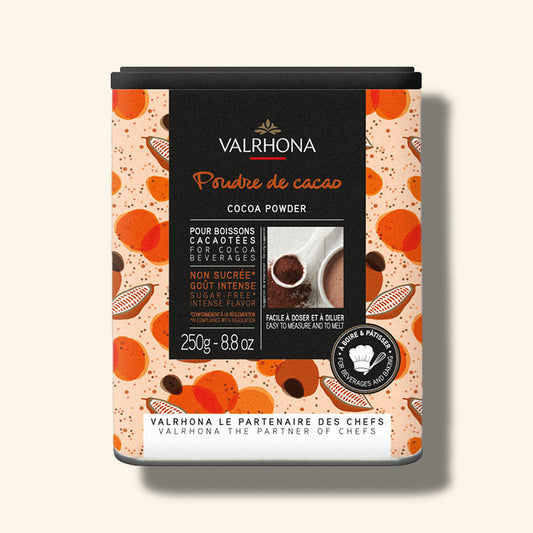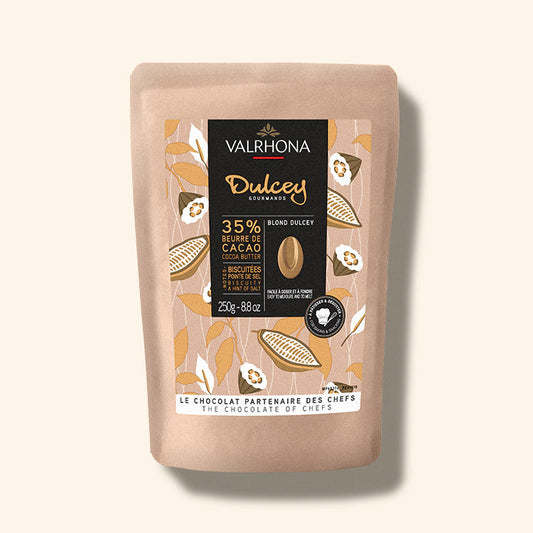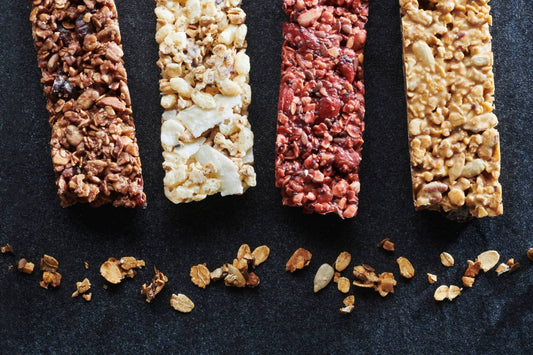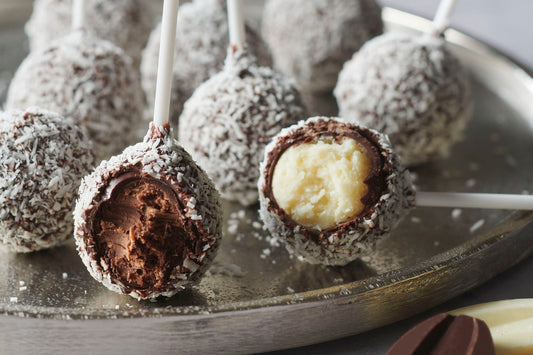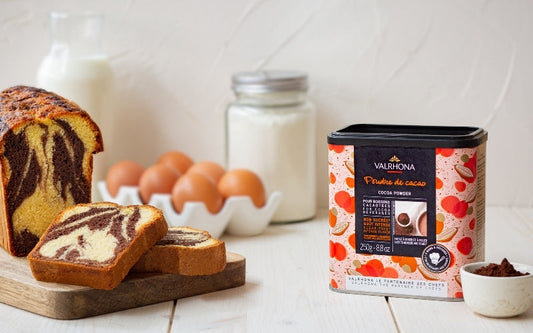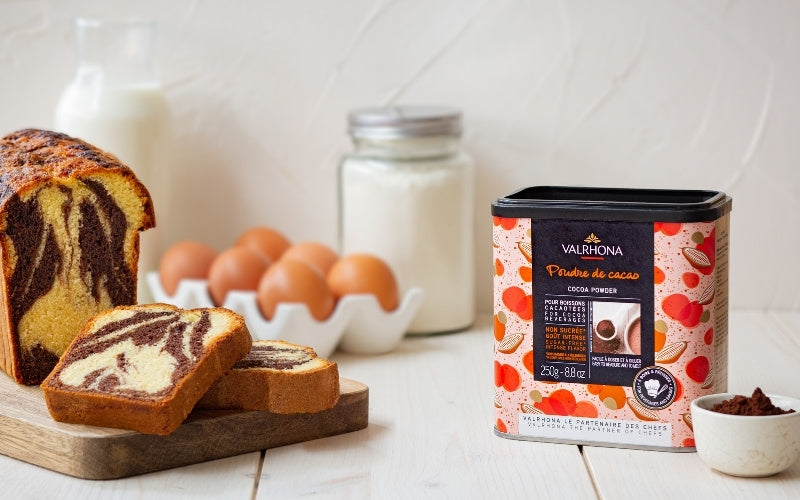

Cocoa powder is one of the most magical ingredients in a baker’s pantry. It brings depth, color, aroma, and a signature chocolate flavor to countless desserts. From a simple mug of hot cocoa to an elegant tiramisu, it’s often the secret element that transforms a recipe. But not all cocoa powders are created equal. Understanding the difference between natural cocoa powder and Dutch processed cocoa powder can help you choose the right one for your baking needs and elevate your homemade creations.
Valrhona’s Premium Dutch Processed Cocoa Powder stands out with its exceptional finesse, intense flavor, and deep mahogany color. It’s designed for home bakers who want professional-quality results.
In this guide, we’ll explore what cocoa powder is, the science behind it, how Dutch processing changes its character, and why this type of cocoa has become a favorite among pastry chefs and home bakers alike.
Table of contents
What is Cocoa Powder?
It comes from the cocoa bean, the same source that gives us chocolate. Once cocoa beans are fermented, dried, roasted, and cracked, the nibs inside are ground to produce cocoa mass. From there, the fat, known as cocoa butter, is pressed out. What remains is the dry, flavorful substance we know as cocoa powder.
This concentrated powder is naturally unsweetened, meaning it provides pure chocolate intensity without sugar. That gives bakers full control over the balance of sweetness in their recipes.

pH: The Science of Flavor
One of the key differences between natural and Dutch processed cocoa powder lies in acidity. To understand this, let’s take a quick look at pH basics.
The pH scale measures how acidic or alkaline something is. A pH of 7 is neutral, anything lower is acidic, and anything higher is alkaline. Natural cocoa powder usually has a pH between 5 and 6, which makes it slightly acidic. This acidity contributes to sharp, fruity, and even citrusy notes in flavor.
Dutch processed powder, however, is treated with an alkaline solution (often potassium carbonate) to raise its pH closer to neutral. This reduces acidity, deepens the color, and rounds out the flavor profile. The result is a smoother, more mellow taste with woody, earthy notes and a striking rich color.
Natural Cocoa Powder vs. Dutch Processed Cocoa Powder
Natural |
Dutch Processed |
|
pH: 5–6 (acidic) Flavor: tangy, fruity, slightly bitter Color: lighter brown Best with: recipes that call for baking soda, since the acidity reacts with the base |
pH: 7 (neutral) Flavor: smooth, deep, rich, less acidic Color: dark red-brown or mahogany Best with: recipes using baking powder, or those where acidity isn’t needed |
This distinction matters most when baking with chemical leaveners. Baking soda requires acidity to activate, so recipes with natural powder often rely on that interaction. Dutch processed cocoa powder, on the other hand, is already neutral, which pairs better with baking powder.
For recipes that don’t use leaveners, such as truffles, puddings, mousses, or hot cocoa, the choice comes down entirely to flavor preference. For example, if you love the taste of Oreos, you’ve already enjoyed the smooth richness of Dutch processed cocoa powder, since that’s the type used in their recipe.
Why Choose Dutch Processed Powder?
Dutch processed cocoa powder is prized in Europe and by pastry chefs worldwide for its versatility and refined taste. Valrhona’s version brings an extra level of finesse, with a very fine texture that dissolves easily in liquids and blends seamlessly into batters.
Here’s why home bakers love it:
- Deeper flavor: More chocolatey, balanced, and less sharp than natural cocoa.
- Rich color: Gives cakes, cookies, and frostings a sophisticated dark hue.
- Smooth texture: Its fineness makes it ideal for dusting desserts or mixing into drinks.
- Versatility: Works beautifully in both baking and beverage applications.

What Can You Make with Cocoa Powder?
It is one of the most versatile ingredients you can stock in your pantry. With just a few spoonfuls, you can transform everyday recipes into chocolate masterpieces.
Drinks
- Hot cocoa made by whisking powder into warm milk with a touch of sugar
- Iced cocoa drinks blended with milk and ice for summer refreshment
- Chocolate smoothies with banana, oats, and nut butter
Desserts
- Chocolate truffles rolled in cocoa for a velvety finish
- Tiramisu dusted with cocoa powder for its signature look and taste
- Mousse or pudding with a deep, silky chocolate base
Baked Goods
- Brownies with an intense chocolate punch
- Marble cake where cocoa provides both flavor and contrast
- Cupcakes, cookies, or even bread enriched with chocolate notes
Decorative Uses
- Dusting cocoa powder over whipped cream, cappuccinos, or frosted cakes
- Using it to coat molded chocolates for a professional touch
- Sprinkling on fruit compotes for depth and color
How to Use Valrhona Cocoa Powder
Valrhona’s Premium Dutch Processed Cocoa Powder is unsweetened, which means you have complete freedom to adjust sugar. Here are a few ideas:
- Mix it into hot milk for a quick and comforting drink.
- Whisk it into cake batters for a rich, uniform chocolate color.
- Fold it into mousse or custard for elegant desserts.
- Sprinkle it over desserts just before serving for a refined finish.
Because it’s so fine, it blends effortlessly, avoiding clumps that can ruin the texture of delicate recipes. Whether you’re whisking, dusting, or folding, it adapts to your technique.

The Unique Taste of Valrhona Cocoa Powder
Valrhona is known worldwide for its expertise in chocolate, and its cocoa powder reflects that heritage. Made from carefully selected cocoa beans, it delivers
- Intense roasted aromas that linger on the palate
- Aromatic complexity beyond simple bitterness
- Low fat content that keeps it light without compromising flavor
- Pure chocolate identity that shines in both simple and sophisticated recipes
This balance of depth and finesse makes it a must-have for bakers who care about quality.
Discover our recipes with cocoa powder
Conclusion
Cocoa powder may look simple, but its role in baking and chocolate-making is profound. Choosing between natural and Dutch processed versions can change the flavor, color, and texture of your desserts. Valrhona’s Premium Dutch Processed Cocoa Powder offers a professional-grade option for home bakers who want to recreate pastry-shop results in their own kitchens.
Its smoothness, rich taste, and versatility make it an essential ingredient. From brownies to tiramisu to a steaming cup of hot cocoa, it adds elegance and depth to every preparation. Once you experience the difference, you’ll never look at cocoa powder the same way again.
What is the difference between cocoa powder and hot chocolate mix?
Cocoa powder is pure, unsweetened, and made only from cocoa beans. Hot chocolate mix usually contains cocoa powder combined with sugar, milk powder, and flavorings.
Can I substitute Dutch processed for natural cocoa powder?
Yes, but be mindful of the recipe. In recipes with baking soda, natural cocoa’s acidity is important. If you swap with Dutch processed, you may need to adjust the leavening.
Is cocoa powder healthy?
The powder is naturally rich in antioxidants and minerals like magnesium and iron. Unsweetened cocoa powder is lower in calories and fat, but its health benefits depend on how it’s used.
How should I store cocoa powder?
Keep it in a cool, dry place, away from light and strong odors. A tightly sealed container helps preserve freshness and prevent clumping.
Can cocoa powder go bad?
It doesn’t spoil quickly because it’s low in fat, you can use it months past it's best before date, but its flavor can fade over time. It’s best used within two years of purchase for maximum intensity.
What desserts work best with cocoa powder?
Brownies, chocolate cakes, cookies, mousses, puddings, and tiramisu all benefit from cocoa powder. It also makes a perfect dusting for whipped cream or fruit.
Why do some recipes call for Dutch processed specifically?
Dutch processed cocoa powder has a neutral pH, deeper flavor, and darker color. Recipes designed around those qualities, such as European-style cakes, will shine when you use it.
